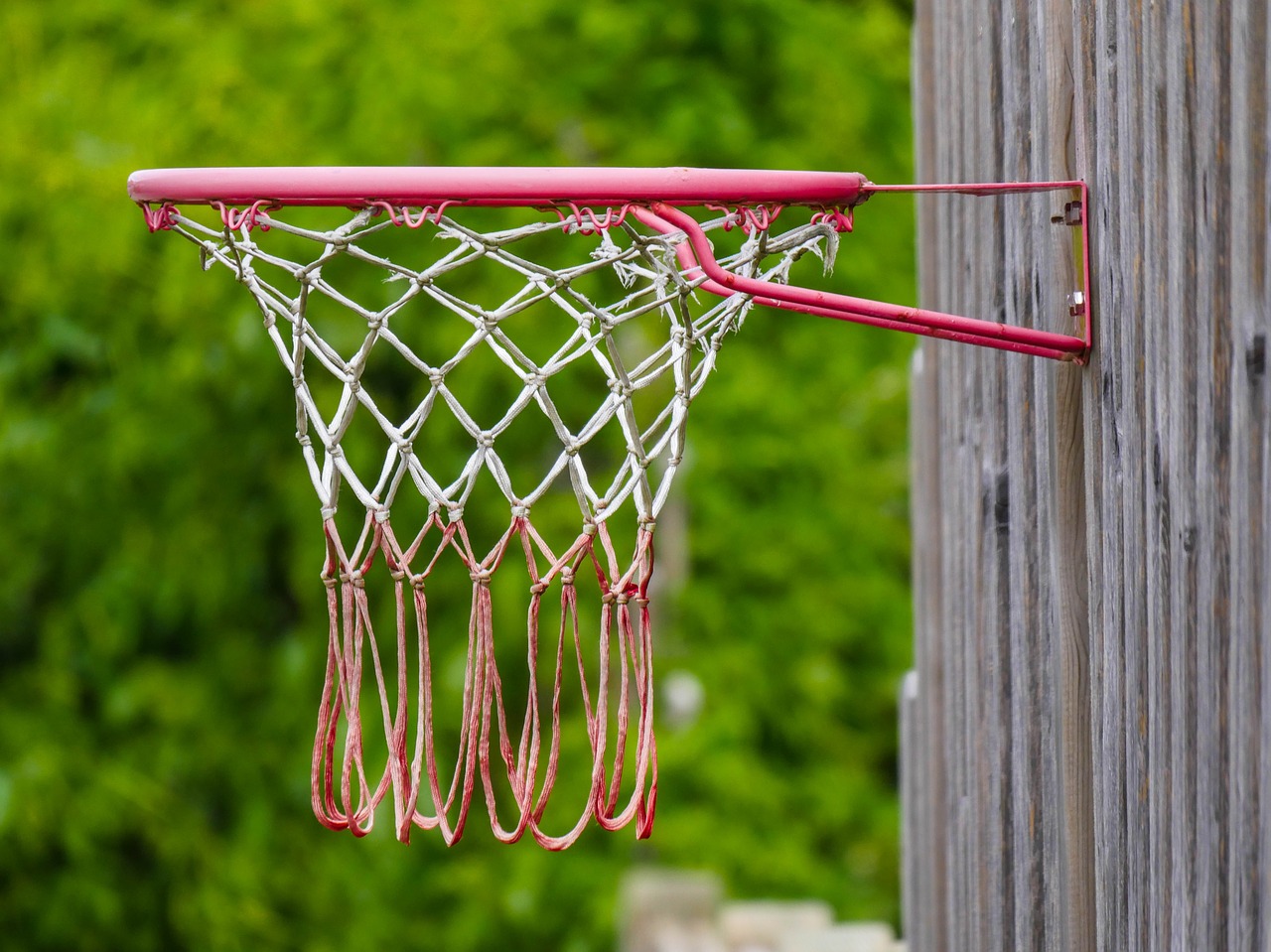Sports
How to build a barnyard basketball court – Farm and Dairy

Get 4 Weeks of Farm and Dairy Home Delivered
If you grew up in a small town and you loved basketball, you probably loved Hoosiers too. It’s the kind of legendary, long-shot sports story every young hoops fan in rural America aspires to live. We all want to be part of that Cinderella team. We all want to be Jimmy Chitwood.
However, it doesn’t always happen that way. A good high school basketball team might win a league championship. A great team might win back-to-back championships. An outstanding team might be able to come away with a district crown and bring home a trophy. Very few teams ever claim regional titles for a trip to the state championship and only the truly elite will win a state title.
Not all of us will get to experience the thrill of dribbling down the hardwood for high school glory, but that doesn’t mean we can’t aspire to be the next Jimmy Chitwood. I don’t think I’ll ever forget asking my dad why no grass grew in the semicircle around his hoop. I know I’ll never forget his response: “A shot like that isn’t earned in the gym.”
At the time, I didn’t really know what he meant by that, but I learned. Whether they were owed to the gym rat club, taken to perfect my mechanics, calculated to beat my brother — yet again — at pig or just because I loved to shoot the basketball, every shot I ever took contributed to building my backyard basketball court. I didn’t wear a bare spot in the lawn — dad was serious about his lawn. But you could tell where the gravel was worn into the driveway. It looked a lot like that semicircle under Jimmy Chitwood’s hoop.
A lot of great teams and memorable players come from urban areas. The Jimmy Chitwood example of a farm boy with an automatic jump shot is rare. There aren’t as many facilities located so close to home in the country. Sometimes you just have to make do with what you have, and that’s not a bad thing. Anywhere to practice is better than nowhere to practice.
Chances are your court won’t be paved, but that can work to your advantage. The gravel in my driveway didn’t smooth itself out. Dribbling over an uneven surface made me a better ball handler. It taught me to keep control of the ball when something I wasn’t expecting happened. It improved my reflexes. It helped me shake off my mistakes. Don’t worry if you don’t have a perfectly smooth surface for your court. It’s probably more important to find a level surface anyway.
One of the benefits of living in farm country is access to nice level ground. Whether it’s in your driveway or somewhere in your yard, pick out a flat area for your court. If you don’t have room for an 84×50-foot full court than plan for a 42×25 half court. Honestly, I never even marked off that much space. I wasn’t planning to take many half-court shots, so I stuck to the 3-point arc, which has a radius of 19.75 feet from the center of the hoop to its edge on a high school court.

Once you’ve picked the most level spot in your yard, you can start marking off the court. You should note that some basketball court measurements differ from high school to college to the professional leagues.
3-point arc
Universal measurements
The foul line. The foul line distance is 15 feet from the foul line to the front of the backboard and 18 feet 10 inches from the baseline.
The key. The free throw lane, or the paint as it’s often referred to, is 12 feet wide on high school and college courts and 16 feet wide for NBA and FIBA. It extends 15 feet from the backboard to the free throw line.
Circles. There are three circles with a 6-foot radius on a court, one in the center of the court and one on each end centered on the foul line.
Hoop. The rim measures 18 inches in diameter and sits exactly 10 feet above the ground.
Backboard. Regulation backboards are 72 inches wide by 42 inches tall. The box on the backboard is 24 inches wide by 18 inches tall.
2. Making your marks
As you’re measuring out your court, use stakes to mark off significant points. For example, you can put a stake in each corner of your court. Then, you can connect them, creating the outside border of your court, with string. Next, follow this procedure to make any other lines on your court.
After you have all the lines on your court marked off with stakes and string, spray paint over the string to mark off your court. When you remove the stakes and string, you’ll have straight lines.
To mark off the 3-point arc and circles on your court, it works better to use a small pole rather than a stake. For the 3-point line, place the pole in the ground directly under the center of your hoop. Then, tie the loose end of your string to the pole, measure out 19.75 feet of string from the attached portion, pull the string taught and spray paint along the outside of the arc from one baseline to the other. For the three 6-foot circles, place the pole in the center, measure 6 feet of string and follow the string 360 degrees around the circumference of each circle.
Although the ground will probably be uneven here and there, you should double check for hazards within the borders of your court, especially holes. Groundhogs love to make homes in the most inconvenient places and nothing will blow an ankle out quicker than running through one. Before you play on your court, make sure to fill in any holes and remove any large rocks. While practice is important, no one can score from the bench with an injury.
I can’t stress how important good shoes are in basketball. It may not seem like a serious practice, playing on a bald spot in your backyard or a worn-out patch of driveway, but you should never wear flip-flops out to shoot hoops. Even if you’re not going as hard as you would in the gym, you should practice the same way you would play and you should always be considerate of your ankles and knees.
There’s no guarantee your barnyard basketball court will make you the next Jimmy Chitwood, Jerry West or Bevo Francis, but practicing every day will make you better. It doesn’t have to be fancy.
I appreciate the efforts you have made to collect and share such a nice and useful article about the basketball court construction. One of the best ways to learn basketball court construction is to follow different types of blogs regarding this subject. Besides, assistance from experienced professionals could also be very useful in this regard. Besides, a person could just hire experienced professionals for the construction of a basketball court in the backyard.
Lots of great information. It wouldn’t be barnyard basketball if your net isn’t installed upside down.
We are glad you have chosen to leave a comment. Please keep in mind that comments are moderated according to our comment policy.
Toll-Free 800-837-3419
Local 330-337-3419
Farm and Agriculture News, Local Market Prices and Crop Reports, Columns and Commentary.
Hundreds of Auction Advertisements for Ohio, Pennsylvania and West Virginia.
Featuring Specialty Antique Auctions, Stores and Shows
Hundreds of Classifieds, Autos & Real Estate Listings









